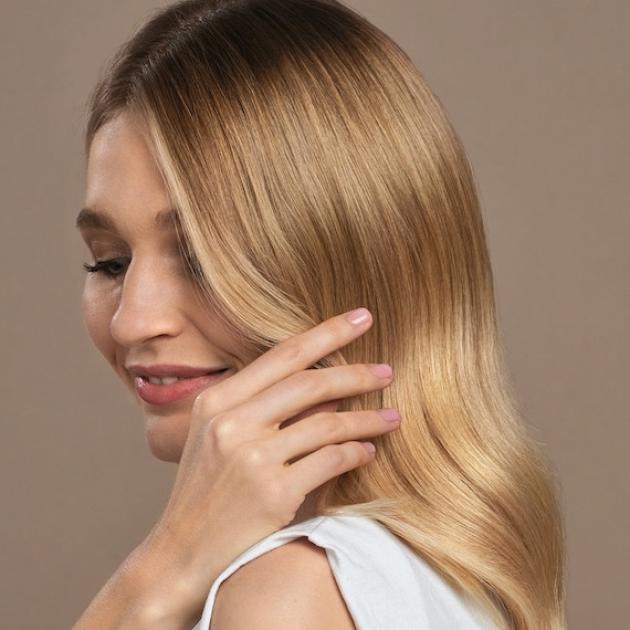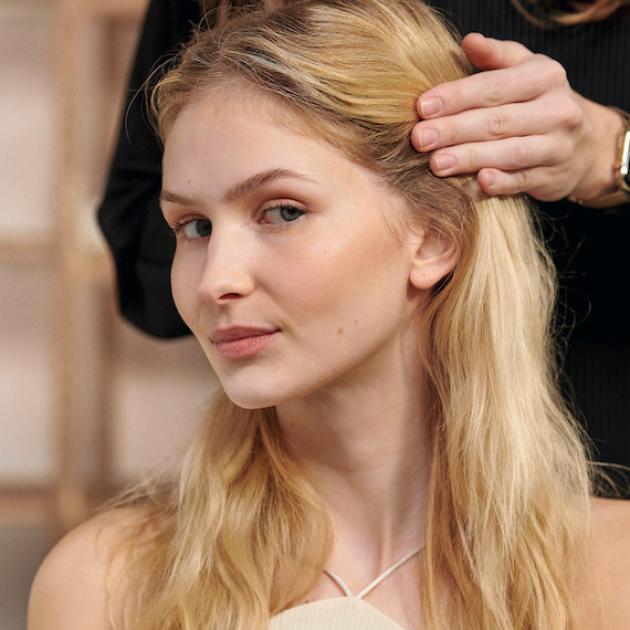How to Repair Damaged Hair From Straightening
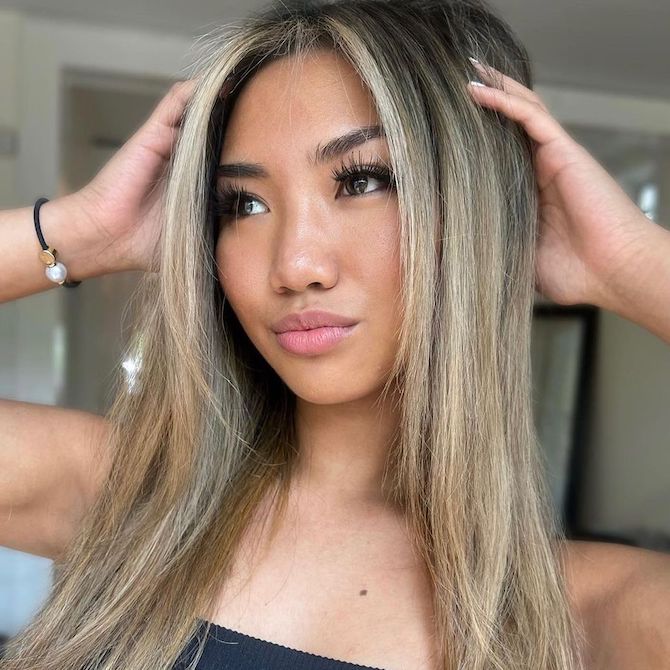
Whether they’re reaching for their flat iron daily or working smooth, sleek hair just for special occasions, even a client with the strictest hair care ritual may notice damage caused by straighteners.
But that doesn’t mean they have to hang up their flat iron forever. With the right tips, tricks and styling products, you can show your client how to treat damaged hair from straightening. Here’s the advice they need for zero-stress, sleek hair…
Do Hair Straighteners Really Damage Hair?
Yes. Without the right pre- and post-styling care, any heated tool can cause hair damage – straighteners included. While they’re great for creating sleek looks, your client’s beloved flat iron may scorch strands with extreme levels of heat. The damage usually begins inside the hair shaft, where the heat weakens the hydrogen bonds that keep strands healthy. Meanwhile, the surface can become dry and brittle, making it prone to split ends, breakage and snapping off.
So, What Are the Signs of Straightener Damage?
Do you suspect your client has been overdoing their hair straightening regimen? Here are some of the most common signs their flat iron has wreaked havoc on their hair…
1. Dry and Brittle Hair Strands
One of the biggest tell-tale signs of straightener damage is that dry, straw-like feel. Hair can become rough to touch, lacking in natural luster, and resistant to even the most sumptuous hair masks. Overexposure to heat can even leave your client with highly porous hair, which means it’s less able to retain moisture, a lot like a sponge. This is because the damage creates tears along the hair shaft, through which hydration escapes. It’s an SOS situation, so make sure your client kick-starts a repair routine as soon as dryness appears.
2. Breakage Through the Lengths
As a result of all that dryness and brittleness, your client may also experience hair breakage through the lengths. Cue split ends and thinning that results in an untidy, not-so-sleek finish. In this case, the most effective remedy is always a cut to clean up the split, burnt sections. Combined with the right care routine, your client can gradually restore smoothness and strength to their hair.
3. Brassy, Dull and Fading Color
Did you know that excess heat can actually fade your hair color? The high temperatures may strip locks of their natural, protective oils, so the dye molecules become vulnerable and start to break down. That’s why heat protection is such a key step in every color maintenance routine. It prevents fading, brassiness and dullness to keep your client’s dream shade looking fresher for longer.
How to Prevent Damaged Hair From Straightening
If your client is just getting started with hair straighteners, they need a strong protective routine in place. These four easy tips will help them safeguards strands against the dreaded sizzle…
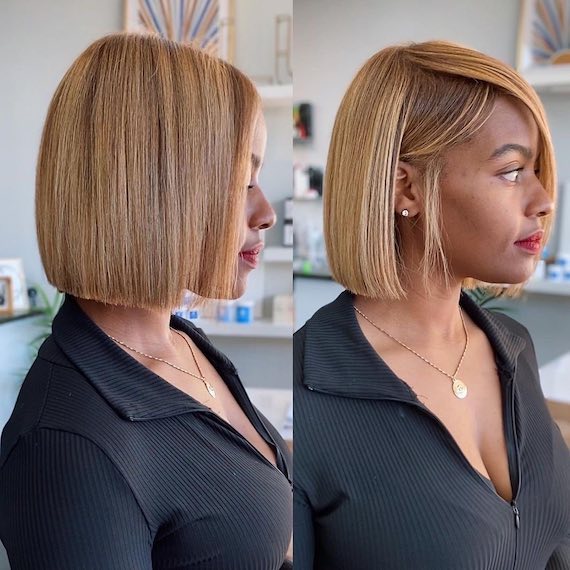
Image Credit: @jasblack
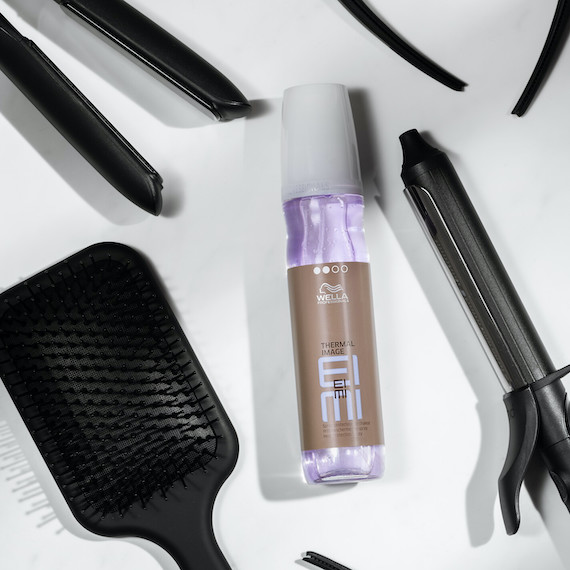
1. Apply Heat Protection
It’s the same advice clients will hear everywhere, but that’s because it’s the best advice. No hair straightening routine is complete without a heat protectant – and the type of product they use is crucial. Recommend one that safeguards against even the highest temperatures, like EIMI Thermal Image, which shields locks from heat up to 448°F. The bi-phase spray is also packed with shine-enhancing ingredients, so you simply shake it to mix it up, spritz it through locks, and get the sleekest finish with every glide of the straighteners.
2. Never Straighten Wet Hair
Unless you’re using a hair tool specifically designed to suit wet hair (like the ghd Duet), straighteners should never touch wet hair. You know this, but make sure your client does too. Their hair should be 100% dry – not even slightly damp – when they reach for the flat iron, or they risk fast-tracking damage by sizzling and burning their strands.
3. Turn Down the Temperature
The optimal temperature for straightening thin or fine hair is 250°F - 300°F (120°C - 150°C), and for thick, coarse hair, it can go up to 350°F - 450°F (180°C - 230°C). These guidelines will give your client a smooth finish without overdoing the heat. If you’re straightening your client’s hair in the salon – or recommending a flat iron for them to use at home – go for the Style Hair Straightener, which has 11 temperature settings for quick, easy adjusting.
4. Remember: Slow is Fast
When straightening their hair, many clients may be pulling their flat iron through the same sections over and over, working ‘quickly’ but having to repeat strokes to get the sleek result they want. Instead, show them that ‘slow is fast’; they should move the straighteners slowly and precisely through each section, so a single stroke delivers the smooth, straight finish they’re hoping for. This stops them from repeatedly applying extreme heat to the same section of hair. Plus, even though each glide feels slower, they’ll often find they finish styling quicker than usual.

Image Credit: @shelbyragazzo

Image Credit: @hairbysamspezia
How Can You Repair Damaged Hair From Straightening?
When it’s too late to prevent damage, it’s time for a treat and repair hair routine. Share this care advice for a frazzled mane in need of nourishment…
1. Fix Stressed-Out Strands with Ultimate Repair
It’s one of the biggest hair care innovations of the past decade, delivering reparative results you can see and feel – even from the very first use. So what makes the ULTIMATE REPAIR ritual so effective? It largely comes down to the skincare-inspired formulas, which harness AHA to rebuild internal bonds, and Omega-9 to replenish the outer layer of hair. These supercharged ingredients are usually only found in the most potent face masks, but now your client’s hair can reap their benefits in the ULTIMATE REPAIR Shampoo, ULTIMATE REPAIR Conditioner and Miracle Hair Rescue. Used together, they target all three of the key types of hair damage, including chemical, mechanical and thermal, so they’re specially designed to reverse the effects of straightening. Here’s exactly why your client will love them:
ULTIMATE REPAIR Shampoo
Gentle yet effective cleansing is key when hair has been compromised, so it’s important the shampoo your client uses is able to purify strands without stripping away moisture. ULTIMATE REPAIR Shampoo delivers on all levels with a rich, luxurious lather that leaves locks soft to the touch and prepared for the next bond-rebuilding step.
ULTIMATE REPAIR Conditioner
Sumptuously creamy yet wonderfully weightless, the ULTIMATE REPAIR Conditioner infuses strands with deep nourishment, and can even help to restore highly porous hair. Recommend your client applies it to lengths and ends, then allows it to absorb for three minutes. It rinses completely clean, so hair feels softer, stronger and more manageable once dry.
ULTIMATE REPAIR Miracle Hair Rescue
In just 90 seconds, this supercharged spray-on, leave-in treatment repairs hair damage*, while leaving your client with 12x smoother hair** and 99% less breakage**. All they have to do is mist it from root to tip through just-washed, damp hair, allow it to absorb for the full 90 seconds, then style as desired. Because it’s ultra-lightweight, they can also layer it with their favorite styling products, including EIMI Thermal Image for that much-needed heat protection.
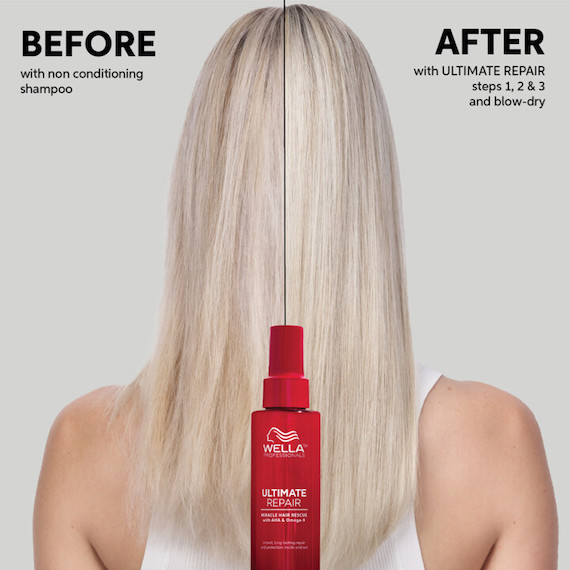

2. Apply a Deeply Reparative Moisture Mask
A weekly treatment is a must for rehydrating dried-out strands, so remind your client to make time for hair masking. Perfect for that Sunday night ‘everything shower’, Fusion Intense Repair Mask reinforces snap-prone locks with what’s known as Silksteel Technology. This innovative tech is inspired by spider silk – one of nature’s strongest fibers – and it works just as hard to boost the strength in strands and keep them resilient. Your client should smooth it through the mid-lengths and ends of clean, damp hair and leave it on for five minutes. To get the best results, tell them to towel-dry hair first so the mask can be absorbed even deeper.
3. Treat Hair with the Gentlest Care
Damaged hair is fragile, which means ‘gently gently’ styling is key. Here are some of the small routine updates your client should make to prevent further damage…
Blot Hair Dry with Soft Cotton
When it comes to towel-drying, remind your client to blot out excess water instead of rubbing hair dry. The reduced friction will be much kinder to those stressed-out strands – and using a microfiber towel or soft cotton t-shirt will prove gentler still.
Sleep on a Silk Pillowcase
So much more than a luxury; a silk pillowcase is softer than your average cotton, so it doesn’t roughen the hair cuticle or cause any snagging on delicate hair. Your client should also make the switch to silk scrunchies, face masks and headbands if they use them. The fabric will slip over strands with zero friction – meaning less damage.
Detangle From the Ends First
Instead of dragging their hairbrush from roots to ends to detangle, your client should work through knots section by section. Tell them to start at the very tips, making sure every tangle is eased out before they gradually move higher up the hair shaft.
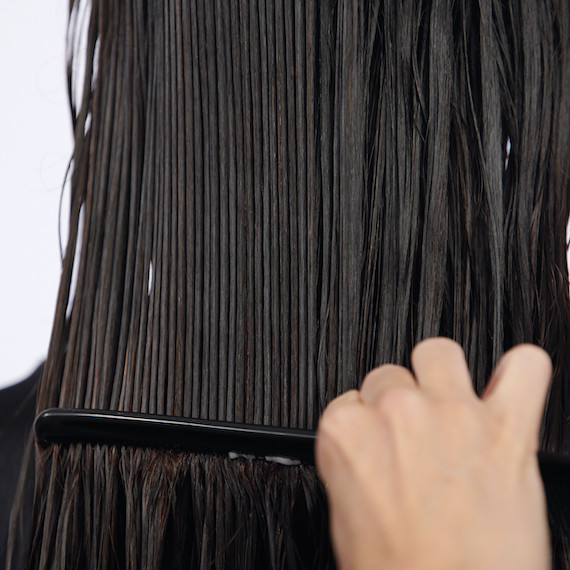
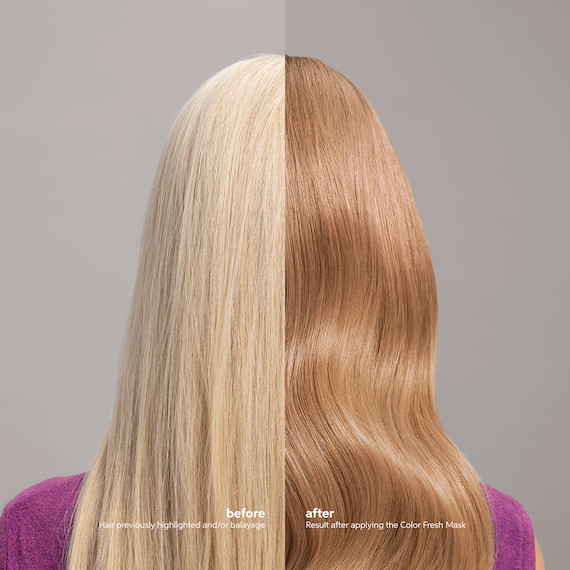
4. Give Dull, Brassy Hair Color a Pigment Boost
If the heat has turned your client’s hair brassy, the best solution is a salon visit. You can tone and correct their hue to perfection, so their color looks fresh once more. But if they’re not yet due a shade touch-up, the Color Fresh Mask is the ideal in-between tinted treatment, delivering a speedy refresh at home that eliminates yellow and orange tones. It’s available in 13 colors, so help your client find the right hue to match their existing shade. Then, when a pigment boost is needed, they can apply it to clean, damp hair, leave it on for 10 minutes, and rinse to reveal their revived color.
Can You Still Straighten Heat Damaged Hair?
If your client is wondering whether they can continue straightening their damaged hair, the answer is ‘yes’ –but they should dial it back. Suggest they stick to straightening on special occasions, so their care routine has a chance to work its magic. This is a great opportunity for them to try out new styling techniques, and our guide to the best products for air-drying hair will help them on their journey.
Looking for more ways to help your client care for their hair? Discover our complete collection of Hair Care Guides, featuring tips for every type and concern.
* When using ULTIMATE REPAIR Miracle Hair Rescue.
** When using ULTIMATE REPAIR Miracle Hair Rescue. Instrumental test versus non-conditioning shampoo.

